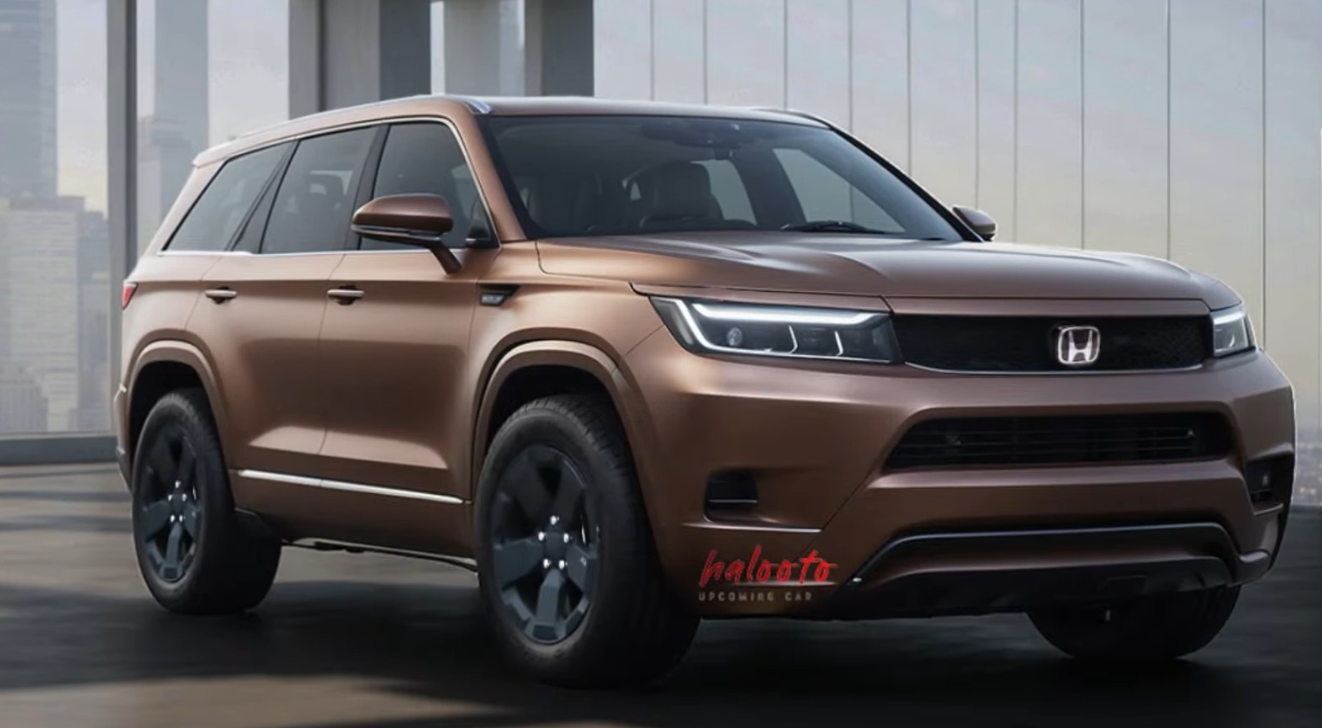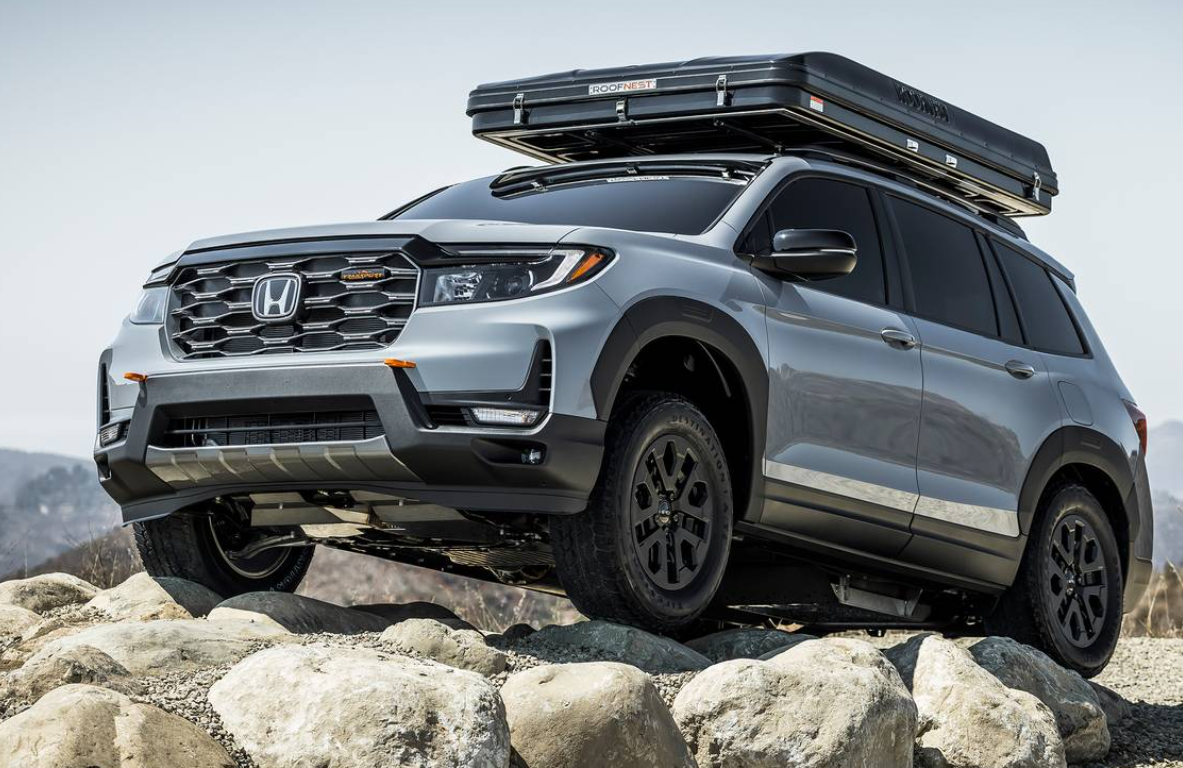The Honda Passport is a mid-size SUV that has been a significant part of Honda’s lineup since its inception in the 1990s. It was originally created as a joint venture between Honda and Isuzu, with the first generation being nothing more than a rebranded version of the Isuzu Rodeo. Despite its shared origins, the Passport managed to carve out its own identity and has since grown in popularity. After a hiatus, the Passport was reintroduced in 2019 to cater to the growing demand for SUVs.
The latest iteration of the Passport is a more refined, comfortable, and technologically advanced vehicle that bears little resemblance to its predecessor. It now sits between the Honda CR-V and Pilot in terms of size and price. The current generation Honda Passport features a 3.5L V6 engine, capable of producing 280 horsepower and comes equipped with modern safety features, such as Honda Sensing suite of driver-assist technologies. Over the years, the Passport has transformed from a rugged, off-road vehicle into a sophisticated SUV capable of both urban commuting and light off-road excursions. It seems certain that the Honda Passport will continue to evolve and adapt to the changing needs and tastes of consumers in the years to come.

General Information about the Motor Vehicle
A motor vehicle, often referred to as a car, is a wheeled vehicle used for transportation. Most definitions imply they are primarily designed for the operation on roads, to have seating for one to eight people, and typically have four wheels. They are powered by a diverse range of engines, including internal combustion engines, electric motors, and hybrids of the two.
Motor vehicles come in a wide array of types and sizes, from small city cars to large trucks. The main categories of motor vehicles are passenger cars, vans, SUVs, trucks, motorcycles, and buses. Each category serves different purposes and has unique features to cater to different needs. For instance, passenger cars are generally used for personal transportation, while trucks are designed for transporting goods.
The invention of the motor vehicle has significantly transformed the world’s transportation system. It has made travel and transportation of goods faster, easier, more convenient, and more efficient. However, despite its numerous benefits, the motor vehicle also comes with several drawbacks. It contributes to environmental pollution due to the emission of harmful gases from its exhaust. It is also one of the leading causes of injuries and fatalities due to road accidents.
In terms of ownership, a motor vehicle is considered a significant investment. The cost of a vehicle includes not only its purchasing price but also the cost of maintenance, fuel, insurance, and other related expenses. Moreover, the value of a motor vehicle tends to depreciate over time.
Technological advancements have led to the development of more sophisticated and advanced motor vehicles. Nowadays, vehicles are equipped with various safety features, such as airbags, anti-lock braking systems, and stability control, to enhance the safety of the driver and passengers. Additionally, the emergence of autonomous vehicles, also known as self-driving cars, is expected to revolutionize the future of the motor vehicle industry.
First Generation (C58 1993): Introduction and Features
The First Generation C58 was introduced in 1993, marking a significant milestone in the field of automobile engineering. A marvel of its time, it was designed with a host of innovative features that set it apart from its contemporaries. One of the most distinct attributes of the C58 was its robust engine, which was engineered to deliver unrivaled power and performance. This was complemented by its sleek, aerodynamic structure that not only enhanced its aesthetic appeal but also contributed to its outstanding speed and agility. The vehicle was also equipped with a state-of-the-art suspension system, providing unparalleled stability and control, thus offering a safe and comfortable driving experience.
Furthermore, the C58 boasted a sophisticated interior, blending comfort with functionality. The seats were designed to offer maximum comfort, while the dashboard was fitted with an intuitive control system for easy access to the vehicle’s numerous features. The car was also fitted with a high-quality audio system and a cutting-edge navigation system, ensuring an enjoyable and hassle-free journey for the driver and passengers alike.
Moreover, the C58 was also lauded for its fuel efficiency, making it a cost-effective choice for consumers. It was designed with advanced fuel-saving technologies, which helped to significantly reduce fuel consumption without compromising on performance. Additionally, it was manufactured using eco-friendly materials, underscoring the brand’s commitment to environmental sustainability.
In terms of safety, the First Generation C58 was ahead of its time, featuring a robust set of safety features including airbags, anti-lock braking system, and a well-crafted crumple zone architecture to mitigate the impact of collisions.
In essence, the C58 was a symbol of innovation and ingenuity, successfully combining power, performance, comfort, and safety in one dynamic package. Its introduction in 1993 heralded a new era in automotive design, setting a high benchmark for future generations of vehicles.

Second Generation (CK58/CM58/DM58 1997): Design and Improvements
The second generation of CK58/CM58/DM58, launched in 1997, brought forth an array of design enhancements and improvements, elevating the series to new heights of technological advancement. First among the modifications was the exterior design that was updated to align with the modern aesthetics of the time, resulting in a sleeker, more streamlined appearance. This not only enhanced the visual appeal but also contributed to better aerodynamics, thereby improving efficiency.
In addition to aesthetics, the second generation CK58/CM58/DM58 also focused on performance enhancements. Technicians incorporated innovative features and design elements to boost the system’s overall capabilities. The engine and transmission were upgraded, leading to increased power output and smoother performance. Additionally, the fuel efficiency was significantly improved, making the second generation a more economical choice for many users.
Comfort and convenience were other key areas of improvement in the second generation. Engineers integrated advanced comfort features and user-friendly controls, ensuring a more enjoyable and effortless user experience. The cabin was redesigned to offer more space, and high-quality materials were used to enhance the comfort level. Furthermore, the second generation CK58/CM58/DM58 was equipped with state-of-the-art safety features, ensuring a safer user experience.
The second generation also saw the integration of cutting-edge technology that made the CK58/CM58/DM58 series more versatile and user-friendly. The integration of advanced software and hardware increased the system’s functionality and made it easier to use. With this generation, the CK58/CM58/DM58 series truly became a force to be reckoned with in its category.
In conclusion, the second generation CK58/CM58/DM58, launched in 1997, ushered in a new era of design and improvements. It brought together a blend of aesthetics, performance, comfort, convenience, safety, and technology, setting a new benchmark in its category. The changes not only made it more appealing to potential users but also ensured that it was better equipped to meet the demands of the modern world.
Third Generation (YF7/8 2019): Modern Updates and Innovations
The third generation YF7/8 2019 brought a plethora of modern updates and innovations that significantly enhanced the vehicle’s performance, design, and overall appeal. The upgrades were primarily focused on improving the car’s fuel efficiency, powertrain, and safety features. The vehicle now utilizes a hybrid powertrain that not only reduces its carbon emissions but also boosts its performance on the road.
The exterior underwent a complete transformation, giving it a more aggressive, sleek, and modern appearance that sets it apart from its predecessors. The interior also received a significant revamp, with state-of-the-art technology, such as touch-screen infotainment systems, smart connectivity, and advanced driver-assistance systems, offering a more comfortable, convenient, and safe driving experience.
One of the standout innovations is the advanced safety technology incorporated into the vehicle. Features like autonomous emergency braking, lane-keeping assist, and blind-spot detection are just a few of the numerous safety features that help to protect the driver and passengers.
The YF7/8 2019 also introduced a new, more efficient transmission system that contributes to the vehicle’s increased fuel efficiency. The new system not only improves the car’s performance but also contributes to a smoother and more enjoyable ride.
The third-generation YF7/8 2019 model is a testament to the brand’s commitment to innovation and improvement, offering consumers a vehicle that not only meets but exceeds their expectations in terms of performance, safety, comfort, and design. The modern updates and innovations incorporated into this model are a clear indication of the manufacturer’s understanding and response to the evolving needs and preferences of today’s motorists.
In conclusion, the third generation YF7/8 2019 model is a powerful blend of innovation, technology, and design, offering an unparalleled driving experience and setting new standards in the automotive industry.

Facelift and Design Enhancements
Facelifts and design enhancements play a crucial role in modern aesthetic practices, both in terms of personal physical appearance and the visual appeal of products or spaces. These procedures or modifications aim to restore, refresh, or improve the original design, often incorporating contemporary trends or technological advancements. In the context of plastic surgery, a facelift refers to a surgical procedure that tightens sagging skin and reduces wrinkles, effectively rejuvenating the face. This medical procedure has gained popularity due to its potential to restore a youthful appearance.
Meanwhile, design enhancements in products or spaces entail modifications to their visual, functional, or ergonomic properties. For instance, in the automotive industry, a facelift might involve altering the bodywork of a car, updating the interior, or introducing new technology to improve performance and user experience. In interior design, a facelift could mean repainting walls, rearranging furniture, or adding decorative elements, all aimed at elevating the aesthetic appeal and functionality of the space.
In the digital realm, design enhancements could involve changes to the user interface of a website or application, often to improve usability and visual appeal. This could entail altering the color scheme, modifying the layout, introducing new features, or improving responsiveness and loading times.
Whether in the scope of personal appearance, product design, or digital interfaces, facelifts and design enhancements serve to improve the perceived value and appeal of the subject. However, it’s important to note that these changes should be implemented thoughtfully, taking into account the needs and preferences of the end-user, to ensure satisfaction and positive reception.
Passport TrailSport (2022): Off-Road Features and Specifications
The 2022 Passport TrailSport, a model of the renowned Honda Passport, is a stunning addition to the off-road vehicle market. This rugged SUV comes equipped with an array of features and specifications designed specifically for off-road enthusiasts. Boasting a robust 3.5L V6 engine, the TrailSport delivers an impressive 280 horsepower, ensuring adequate power for any off-road adventure. Coupled with a nine-speed automatic transmission and an intelligent Variable Torque Management All-Wheel-Drive system, this vehicle promises a smooth yet exciting ride on any terrain.
In terms of design, the Passport TrailSport exhibits an aggressive and robust exterior. It features unique 18-inch wheels with a robust design, ensuring stability and control even on the roughest terrains. Its increased ride height and wider track width further enhance its off-road capabilities. Notably, the TrailSport is equipped with specially designed all-terrain tires, providing optimal traction and control. Additionally, its underbody protection shields vital components from damage during off-road excursions.
The interior of the Passport TrailSport is equally impressive, providing a blend of comfort and utility. The cabin is spacious with comfortable seating for five, and the cargo area is versatile, capable of accommodating various types of gear. The Passport TrailSport also boasts state-of-the-art technology features, including an 8-inch Display Audio touchscreen with Apple CarPlay® and Android Auto™ integration, ensuring entertainment and connectivity even in remote locations.
The 2022 Passport TrailSport demonstrates Honda’s commitment to the off-road vehicle market. Its robust engine, advanced all-wheel-drive system, and off-road-oriented design elements combine to offer an exciting and capable off-road driving experience. Furthermore, its comfortable interior and cutting-edge technology features set a new standard for off-road vehicle comfort and convenience. This model is a testament to Honda’s innovative spirit and its dedication to meeting the diverse needs of its customers. Whether for an off-road adventure or everyday driving, the Passport TrailSport stands ready to deliver an exceptional performance.
